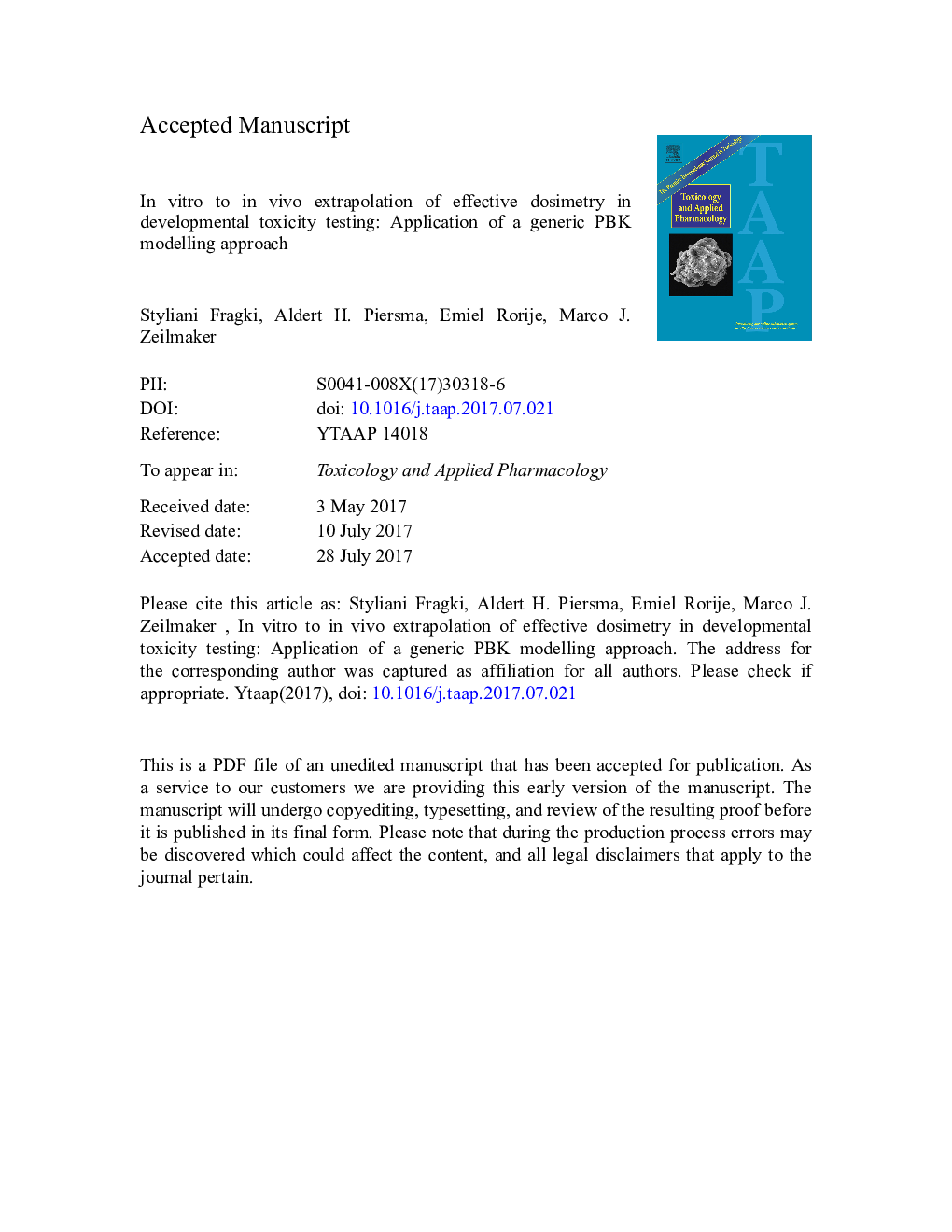| کد مقاله | کد نشریه | سال انتشار | مقاله انگلیسی | نسخه تمام متن |
|---|---|---|---|---|
| 5558397 | 1561130 | 2017 | 45 صفحه PDF | دانلود رایگان |
عنوان انگلیسی مقاله ISI
In vitro to in vivo extrapolation of effective dosimetry in developmental toxicity testing: Application of a generic PBK modelling approach
دانلود مقاله + سفارش ترجمه
دانلود مقاله ISI انگلیسی
رایگان برای ایرانیان
موضوعات مرتبط
علوم زیستی و بیوفناوری
علوم محیط زیست
بهداشت، سم شناسی و جهش زایی
پیش نمایش صفحه اول مقاله

چکیده انگلیسی
Incorporation of kinetics to quantitative in vitro to in vivo extrapolations (QIVIVE) is a key step for the realization of a non-animal testing paradigm, in the sphere of regulatory toxicology. The use of Physiologically-Based Kinetic (PBK) modelling for determining systemic doses of chemicals at the target site is accepted to be an indispensable element for such purposes. Nonetheless, PBK models are usually designed for a single or a group of compounds and are considered demanding, with respect to experimental data needed for model parameterization. Alternatively, we evaluate here the use of a more generic approach, i.e. the so-called IndusChemFate model, which is based on incorporated QSAR model parametrization. The model was used to simulate the in vivo kinetics of three diverse classes of developmental toxicants: triazoles, glycol ethers' alkoxyacetic acid metabolites and phthalate primary metabolites. The model required specific input per each class of compounds. These compounds were previously tested in three alternative assays: the whole-embryo culture (WEC), the zebrafish embryo test (ZET), and the mouse embryonic stem cell test (EST). Thereafter, the PBK-simulated blood levels at toxic in vivo doses were compared to the respective in vitro effective concentrations. Comparisons pertaining to relative potency and potency ranking with integration of kinetics were similar to previously obtained comparisons. Additionally, all three in vitro systems produced quite comparable results, and hence, a combination of alternative tests is still preferable for predicting the endpoint of developmental toxicity in vivo. This approach is put forward as biologically more plausible since plasma concentrations, rather than external administered doses, constitute the most direct in vivo dose metric.
ناشر
Database: Elsevier - ScienceDirect (ساینس دایرکت)
Journal: Toxicology and Applied Pharmacology - Volume 332, 1 October 2017, Pages 109-120
Journal: Toxicology and Applied Pharmacology - Volume 332, 1 October 2017, Pages 109-120
نویسندگان
Styliani Fragki, Aldert H. Piersma, Emiel Rorije, Marco J. Zeilmaker,